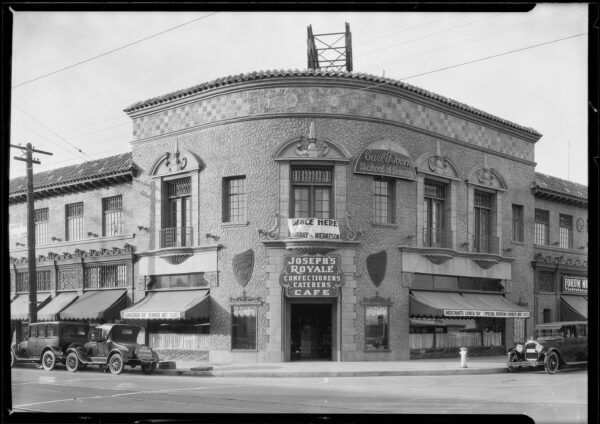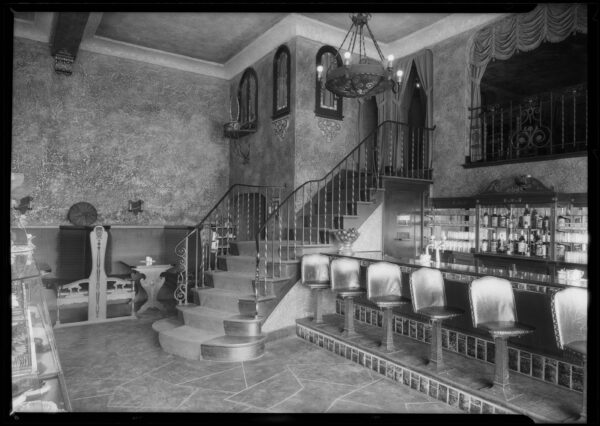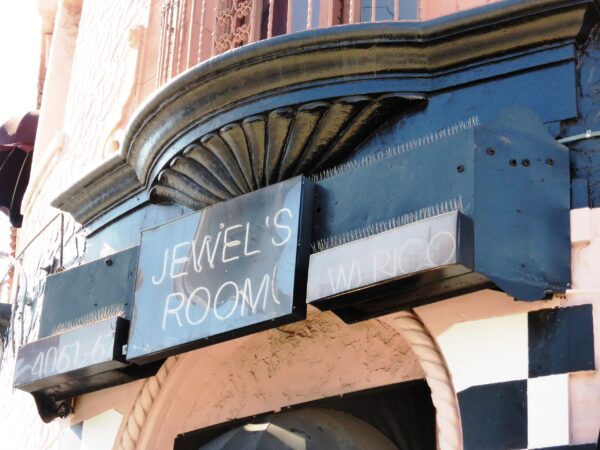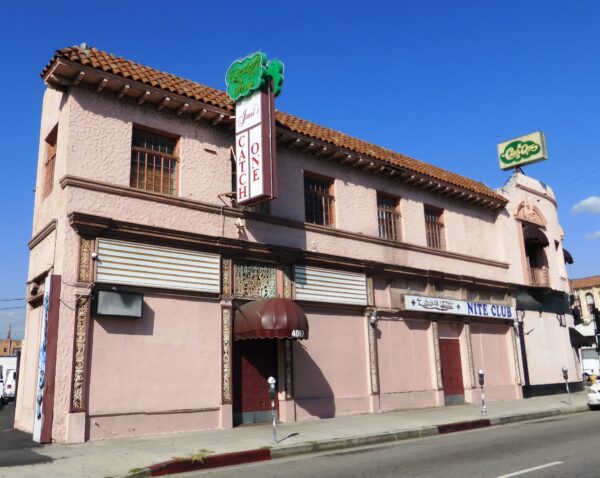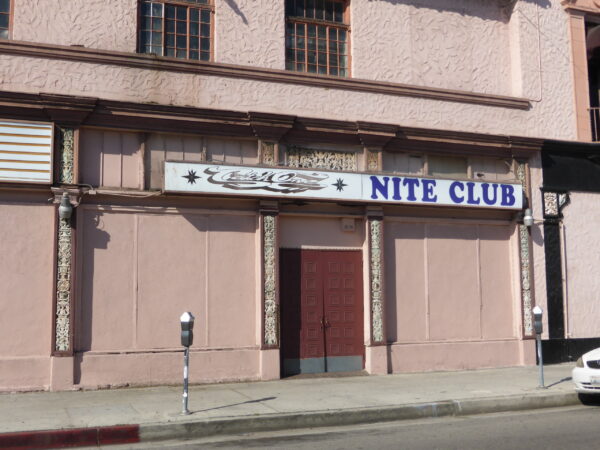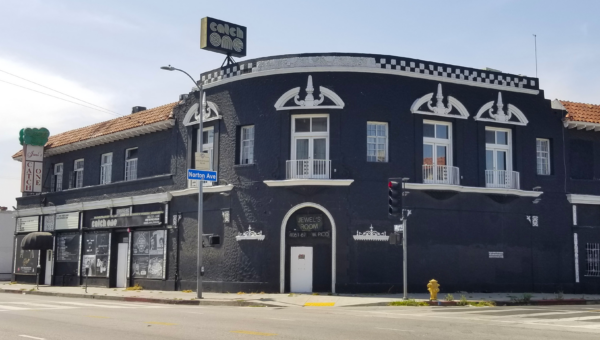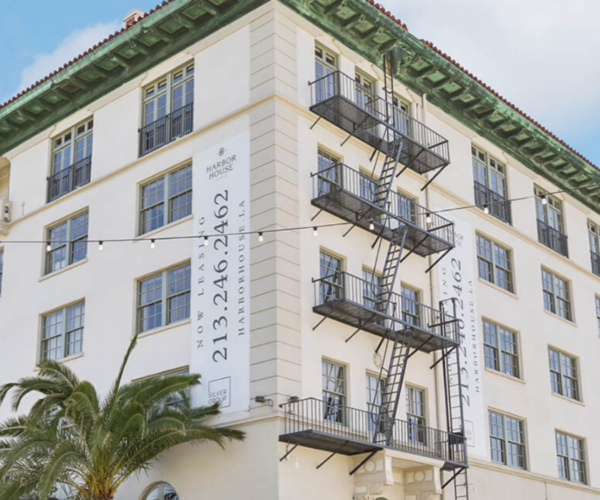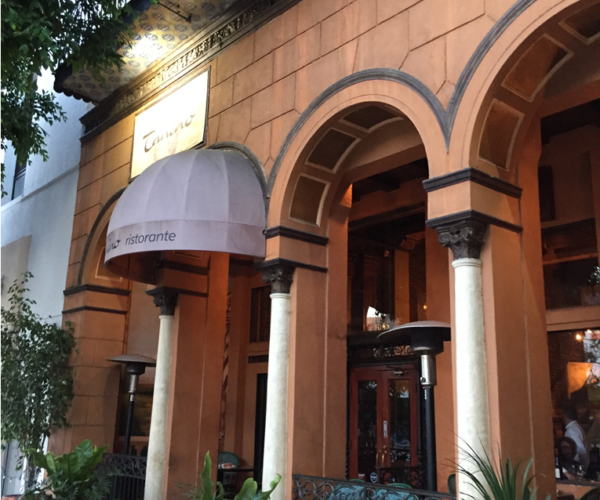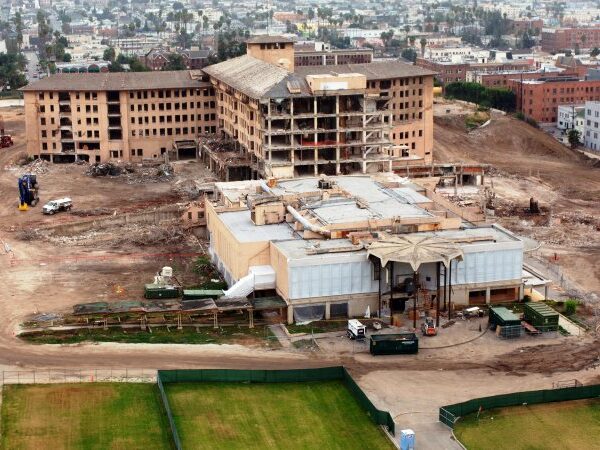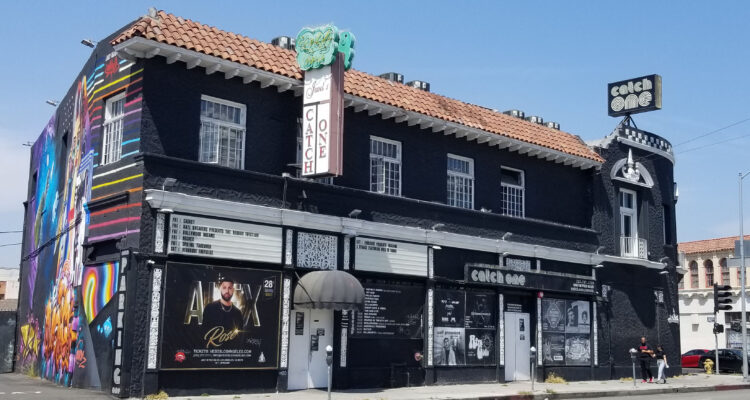
Place
Jewel’s Catch One
Jewel’s Catch One was the oldest Black woman-owned disco in Los Angeles, and one of the oldest Black-owned discos in the country.
Active
Thanks to the African American Historic Places Project, Jewel’s Catch One is on its way to be L.A.’s next Historic-Cultural Monument.
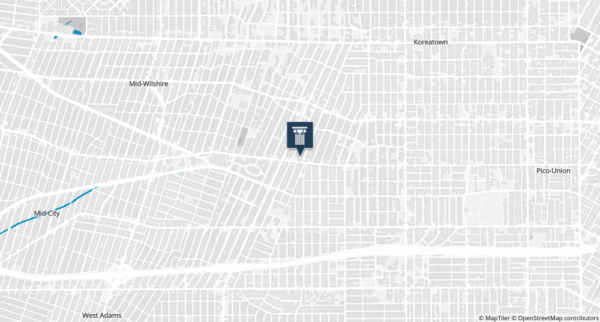
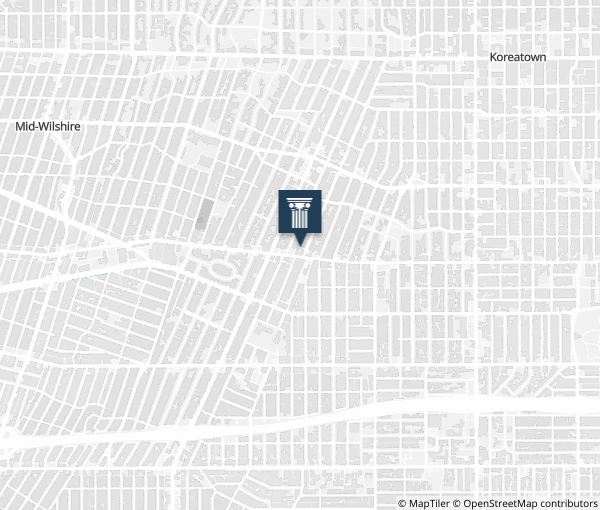
Place Details
Address
Get directions
Architect
Style
Designation
Property Type
Community
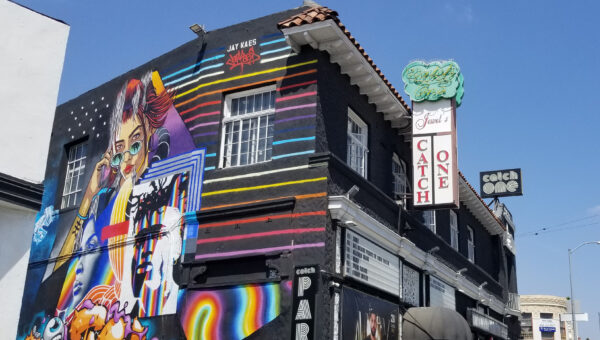
Sana Ahmed/L.A. Conservancy
Overview
Founded in 1973 in Arlington Heights, Jewel’s Catch One is widely believed to be the first large-scale discotheque in the United States to serve and operate within the Black LGBTQ+ community.
As a beloved social space for over four decades, Catch One is emblematic of the ways in which bars and nightclubs nurtured a rare sense of belonging and helped pioneer social change for LGBTQ+ people in the twentieth century. It’s existence highlights the longstanding racism within the LGBTQ+ community that led Black and other communities of color to forged new spaces where they could thrive.
Jewel Thais-Williams owned and operated the club from its founding until its closure in July 2015.
Now operating at “Catch One,” this iconic venue was nominated as a L.A. Historic-Cultural Monument as part of the African American Historic Places L.A. Project in 2024.
About This Place
About This Place
Housed in a prominent 1925 Mediterranean Revival building at 4067 W. Pico Boulevard, the club contained three dance floors and three bars, offering dancing and a bar scene that catered to different tastes in music and style. The upper floor boasted a large dance floor with a stage, and the lower level was reserved for weekly themed parties.
Despite entrenched racism, sexism, and homophobia, Jewel forged a nationally-known discotheque. The previous club at the building, Diana Cafe, excluded Black patrons. While Jewel originally tried to rent the building, a state law barred women from bartending unless they owned the venue (the law was repealed in the mid 1970s). After a whirlwind fundraising campaign, Jewel purchased the bar and opened the club to a multiracial and multicultural crowd. Jewel’s Catch One was persistently targeted by the L.A. Police Department and the Department of Alcohol and Beverage Control.
Jewel and her wife Rue Thais-Williams offered patrons more than just a place to dance. In the height of the AIDS epidemic, they opened Rue’s House in the same building in 1989 to provided vital services to women and children living with HIV/AIDS.
Over the years, Jewel’s Catch One hosted numerous celebrities and performers, including Madonna, Bette Midler, Keenen Wayans, Sammy Davis, Jr., Warren Beatty, Melba Moore, Phyllis Hyman, Freda Payne, Chaka Khan, The Weather Girls, Rick James, and Esther Phillips. It helped launch the careers of a number of performers and quickly became known as the “Studio 54” of Los Angeles.
The club also served as a popular filming location and appears in films including Black American Princess, I Tina, and Pretty Woman, and in television shows such as Cold Case.
In early 2015, Jewel Thais-Williams announced that the iconic nightclub would close its doors after forty-two years and that the property would be listed for sale. Jewel told the Los Angeles Times, “I felt, and others have said, it’s an institution. It was ours, but it’s time to move on.”
Our Position
Places like Catch One reveal the ways in which LGBTQ communities struggled and fought for safe spaces and homes in sites that were often on the fringes of larger cities. In many cases, these types of establishments survived on invisibility or anonymity. While some operated from architecturally interesting buildings, others were housed in modest, nondescript structures in unassuming locations.
As an everyday gathering space, Catch One – along with Studio One (now The Factory) in West Hollywood, Redz in Boyle Heights, Circus Disco in Hollywood, Oil Can Harry’s in Studio City, and others – helps tell a fundamental story about the intersection of race, gender, class, and sexual identity in the built environment of greater Los Angeles.
Together, these clubs reveal painful realities about patterns of discrimination within historically marginalized groups, issues that remain relevant today, and demonstrate the ways in which a single building may evoke different memories, associations, and responses from different people.
Jewel’s Catch One represented a direct response to the discrimination that transgender and cisgender women and people of color often experienced at popular establishments in West Hollywood. By creating an affirmative space for and by Black LGBTQ+ community members, Jewel’s became an energetic and multiracial community. Despite facing relentless pressure from law enforcement and others in the neighborhood, the club persevered in its efforts to spark culture, joy, and connection.
How You Can Help
Jewel’s Catch One HCM nomination will soon be hear by City Council’s Planning & Land Use Management (PLUM) Committee. Follow African American Historic Places L.A. Project for more ways to support this initiative.
